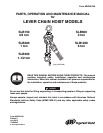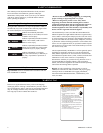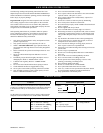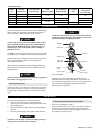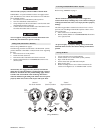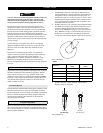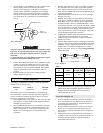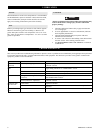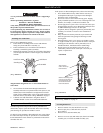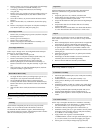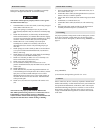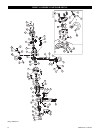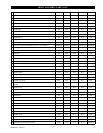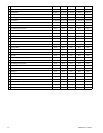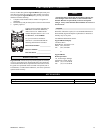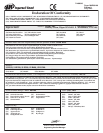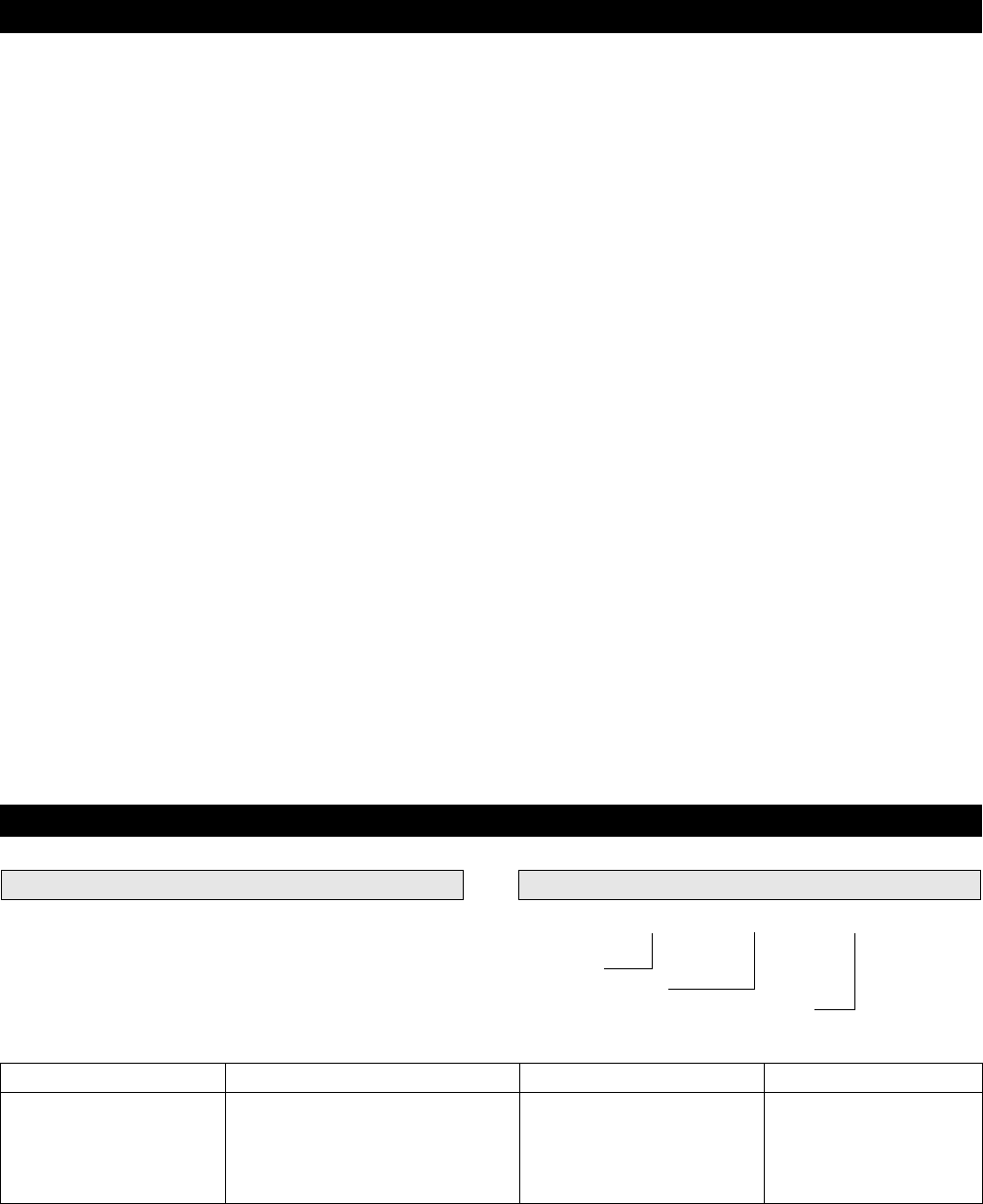
MHD56109 - Edition 9 3
SAFE OPERATING INSTRUCTIONS
The following warnings and operating instructions have been
adapted in part from American National Standard ASME B30.21
and are intended to avoid unsafe operating practices which might
lead to injury or property damage.
Ingersoll Rand recognizes that most companies who use hoists
have a safety program in force in their plants. In the event that
some conflict exists between a rule set forth in this publication
and a similar rule already set by an individual company, the more
stringent of the two should take precedence.
Safe Operating Instructions are provided to make an operator
aware of dangerous practices to avoid and are not necessarily
limited to the following list. Refer to specific sections in the
manual for additional safety information.
1. Only allow personnel trained in safety and operation of this
product to operate hoist.
2. Only operate a hoist if you are physically fit to do so.
3. When a “DO NOT OPERATE” sign is placed on hoist, do
not operate hoist until sign has been removed by designated
personnel.
4. Before each shift, the operator should inspect hoist for wear
or damage.
5. Never use a hoist which inspection indicates is worn or
damaged.
6. Periodically, inspect hoist thoroughly and replace worn or
damaged parts. Refer to “INSPECTION” section.
7. Lubricate hoist regularly. Refer to “LUBRICATION”
section.
8. Do not use hoist if hook latch has been sprung or broken.
9. Check that hook latches are engaged before using.
10. Never splice a hoist chain by inserting a bolt between links.
11. Only lift loads less than or equal to rated capacity of hoist.
Refer to “SPECIFICATIONS” section.
12. Never use hoist load chain as a sling.
13. Never operate a hoist when load chain is not centered under
top hook. Do not “side pull” or “yard.”
14. Never operate a hoist with twisted, kinked, “capsized” or
damaged load chain.
15. Do not force a chain or hook into place by hammering.
16. Never insert point of hook into a chain link.
17. Be certain load is properly seated in saddle of hook and hook
latch is engaged.
18. Do not support load on tip of hook.
19. Never run load chain over a sharp edge. Use a sheave.
20. When using two hoists to suspend one load, select two hoists
each having a rated capacity equal to or more than the load.
This provides adequate safety in the event of a sudden load
shift.
21. Pay attention to the load at all times when operating hoist.
22. Always ensure that you, and all other people, are clear of
load path. Do not lift a load over people.
23. Never use hoist for lifting or lowering people, and never
allow anyone to stand on a suspended load.
24. Ease slack out of chain and sling when starting a lift. Do not
jerk the load.
25. Do not swing a suspended load.
26. Do not leave a load suspended when hoist is unattended or
not in use.
27. Never weld or cut on a load suspended by the hoist.
28. Never use hoist chain as a welding electrode.
29. Do not operate hoist if chain jumping, excessive noise,
jamming, overloading, or binding occurs.
30. Keep load from hitting load chain.
31. Do not use a cheater bar or extended handle.
32. Never place hand inside throat area of a hook.
33. After use, or when in a non-operational mode, hoist should
be secured against unauthorized and unwarranted use.
34. Only operate hoist with manual power.
SPECIFICATIONS
General
The Lever Chain Hoist can be mounted to the suspension shaft of
a trolley or a permanent mounting structure. The hoist is designed
to lift and lower loads up to rated capacity with minimal lever
effort.
To determine hoist configuration refer to capacity and lot number
nameplate located on hand lever for model number information.
Model Code Explanation
Example: SLB - 300 - 15
Series
Hoist Capacity
Lift (Hoist load chain/hook travel)
Series Hoist Capacity Lift Options
SLB = Silver Lever Hoist 150 = 3/4 metric ton / 750 kg
200 = 1 metric ton / 1,000 kg
300 = 1-1/2 metric ton / 1,500 kg
600 = 3 metric ton / 3,000 kg
1200 = 6 metric ton / 6,000 kg
15 = 5 m (standard)
20 = 6 m
XX = Specify length
F = Hoist without load chain
S = Shipyard Hook



